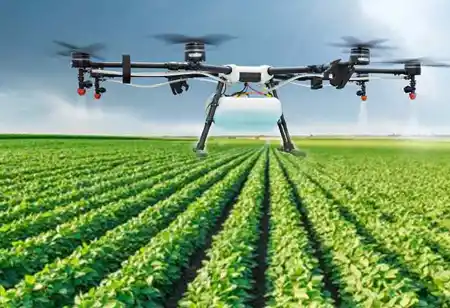Thank you for Subscribing to Agri Business Review Weekly Brief
What Are the Potential Benefits of Satellite Technologies in Agriculture?
This article delves into the possibilities of satellite technologies in transforming agriculture,

By
Agri Business Review | Tuesday, April 30, 2024
Stay ahead of the industry with exclusive feature stories on the top companies, expert insights and the latest news delivered straight to your inbox. Subscribe today.
This article delves into the possibilities of satellite technologies in transforming agriculture, highlighting the benefits of utilizing satellite technology to enhance crop productivity, lower expenses, and boost operational effectiveness.
Fremont, CA: Agriculture has long been the backbone of human society. People have made great strides toward contemporary farming, adopting sophisticated machinery and technical advancements, from utilizing simple hand tools to tilling the soil. Widespread automation is among the most revolutionary developments in the history of agriculture in recent times.
Through automation, precision and efficiency are increased in agriculture through the use of satellite imagery and geospatial data analysis. While satellite photography captures soil conditions, crop health, and other characteristics, geospatial data analysis evaluates this information to assist in monitoring changes across fields. Crop yields are maximized, input costs are decreased, and the environmental impact is minimal.
The Significance of Automation
Many factors, including population growth, resource scarcity, biodiversity loss, food waste, climate change, and sustainability concerns, make it nearly difficult for contemporary agriculture to continue being productive without technology.
Our understanding of agriculture is changing as a result of automated technology. Thanks to drones, satellites, and robots, they assist farmers in maximizing the use of inputs, increasing yields, and lowering the demand for big labor forces. Growers can now make timely and well-informed decisions regarding farming practices because of IoT devices and real-time geospatial data processing. Additionally, by assuring the effective use of resources, automation helps combat climate change. Additionally, automated post-harvest technologies reduce food waste. Precision agriculture also encourages sustainable farming by using less fertilizer and pesticides. Automation reduces costs by stabilizing production and protecting against volatile markets and expensive labor.
Satellites for Health Evaluation and Crop Monitoring
Among many other things, satellite imaging can be used to track crop health, identify possible diseases, identify development phases, identify water stress, and much more. For that, various farm software are typically employed.
For instance, users may manage all fields online in one location with the EOSDA Crop Monitoring tool from EOS Data Analytics, which leverages AI-based satellite imaging analytics. Users can oversee crop care operations, issue scouting assignments, and monitor field conditions. The program provides a scouting app, zoning function, measurements of vegetation indices, a field scoreboard, meteorological data (including historical and current 14-day forecasts), and much more.
Estimating Yield and Optimizing Harvest
The agricultural industry is undergoing a profound upheaval that extends well beyond sophisticated technology and aerial drones. This is particularly evident in crop prediction and harvest optimization. Modern growers use geospatial data analytics, satellite imaging, soil sensors, and comprehensive meteorological data to anticipate crop yields as precisely as possible instead of depending on conventional methods or gut feeling. Over time, this change simplifies market planning and logistics.
Furthermore, technology intervention has impacted harvest optimization as a whole. Today, growers employ spectral analysis, which provides exact information on crop maturity, to decide the optimal time for harvesting instead of subjective field evaluations. The development of robotic technology that can judge when a crop is ready to be harvested shows the close relationship between innovation and custom. Contemporary agri-tech contributes to increased efficiency and shows the path towards sustainability, guaranteeing both environmental preservation and productivity.
Satellite technologies also offer technologies like automatic field boundary detection, and spectral sensing of cropland.





